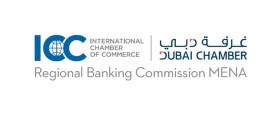Centralisation and standardisation as well as simplification and automation – these are the focus areas for an efficient treasury process, according to Judith van Paassen, partner at Zanders Treasury and Finance Solutions, reported in a journal published by OpusCapita. She believes that the key drivers for treasuries are to reduce cost, create value, reduce risk and improve control.
According to van Paassen, it is impossible to achieve treasury efficiency if you are working with Excel sheets without a defined process.
“The first thing to do is to centralise your treasury processes. A centralised treasury management system [TMS] is a prerequisite for supporting this and, where possible, should be carried out as a straightthrough process,” she said.
“But even if you have centralised processes, you may still need to standardise and simplify both the internal and external processes, such as dealing with group entities or managing external counterparties. These items are key in any treasury transformation project, where standardisation and simplification should be attempted before automation.”
During the recent credit crisis, the value of semi-real-time information was highlighted. As access to credit was always number one on the treasury objectives list, global visibility of cash in a semi-real-time way became important. Interest in cashflow forecasting and counterparty risk also increased. A common request was, “I need an overview of our counterparty risk in five minutes.”
Payment processes and integration were also areas to focus on. Improving payments processing had become easier thanks to developments such as the single euro payments area (SEPA) and the technical standardisation that has spun off that, including XML.
“To get the best coverage and services for cash management, a treasury often needs to use regional banks.
This was previously difficult due to different connectivity solutions, but SWIFT and XML help to standardise connectivity and thus make it easy for corporations to choose regional bank services,” said van Paassen.
Then, when the process side of things was straightened out, it was time to enter the last phase: automation.
“After standardisation, everyone works in the same way. Automation gives you even more transparency, mitigates operational risks and creates one standardised process that is repeated every time.
“The phases to go through are centralisation, standardisation, simplification and automation – in this order. My advice is to also use optimal technology and to make the best out of it,” suggested van Paassen.
She said she believed that the credit crisis gave treasuries some valuable lessons about the importance of information and processes. When the processes were in place, they could continue to be used as the economy brightened up.
 Cash And Trade Magazine For Cash and Trade professionals in the Middle East
Cash And Trade Magazine For Cash and Trade professionals in the Middle East




